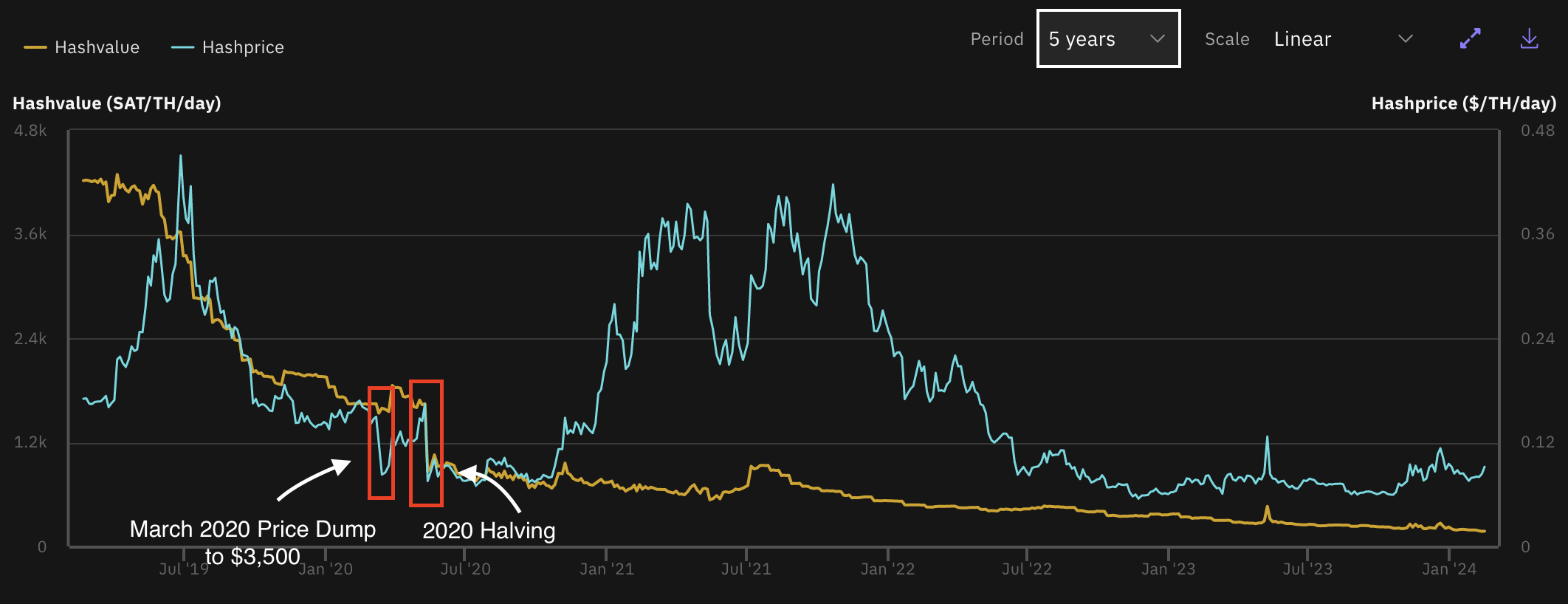

If the price keeps pumping, how will that affect the bitcoin mining industry heading into the next block subsidy halving?
The last week has been a surreal in the world of bitcoin. I think it's safe to say that most people were convinced that the approval of the bitcoin ETFs would bring significant demand for bitcoin with them. However, I don't think anyone thought that the ETFs would be as successful as they have been since their launch last month. While I don't believe that anyone who cares about getting proper exposure to bitcoin should be buying the ETFs (there are much more secure ways to buy bitcoin that enable you to actually hold the asset yourself), it is impossible to ignore the success that they've had at accumulating bitcoin.
UPDATE
— Thomas | heyapollo.com (@thomas_fahrer) February 14, 2024
Bitcoin ETF Net In Flows + 12.8K #BTC 🚀
New All Time High 704.4K BTC Held in ETFs
New 9 ETFs + 14.3K BTC
Highlights
Blackrock +10K BTC 🤯
Fidelity + 3.3K BTC
GBTC -1.5K BTC
Follow our ETF Tracker for Live Updates pic.twitter.com/THHyeSMdsL
As it stands today, in aggregate, the ETFs hold ~704,400 bitcoin. Though, it should be noted that GBTC converted their trust product which already had over 610,000 into an ETF and brought that BUM with them to the broader bitcoin ETF market. GBTC has seen a material outflow due to the fact that FTX's bankruptcy estate decided to liquidate all of their shares to pay back creditors waiting in line to get their money back from the Ponzi scheme led by Sam Bankman-Fried, and the fact that GBTC is objectively a shitty product due to their fees, which are egregiously higher than their competitors.
Over the last week, it seems that the market has weathered the outflows from GBTC and momentum for inflows into the other ETFs, dominated by Blackrock and Fidelity, has reached a breakout pace. Over the last four days inflows have averaged well above 10,000 bitcoin per day. Today, there were more than 14,300 bitcoin that were purchased on the market by ETF issuers. To put this into context, as it stands today, 900 new bitcoin are distributed to the market per day via the block subsidy. That subsidy is set to fall to 450 bitcoin per day in 9,479 blocks. If this pace keeps up (let's assume 10,000 bitcoin per day) ETF issues will be eating up 11.11x the daily issuance leading up to the halving. And, if the demand from ETFs persists, that will double to 22.22x the daily issuance. This stat is even more jarring when you consider the fact that more than 70% of bitcoin is held in addresses that have been dormant for a year or longer.

Now, these type of flows in bitcoin terms will simply not be able to persist. At least not for longer than ~2,000 days. If they did, the ETFs would hold all of the bitcoin on the market. This is simply not going to happen. The demand in dollar terms may persist, but the ETFs won't be pulling 10,000+ bitcoin off the market for too long. The supply and demand dynamics of a finitely scarce asset will come into play and drive up the price to a point where it is impossible to scoop up that much bitcoin. With bitcoin over $52,000 at the time of writing, it is pretty clear that these dynamics are already at play. The question that many are asking is, "At what point does the supply of bitcoin available on OTC desk become so scarce that it affects the price of bitcoin in unprecedented ways?" Creating intraday gap-ups that have not been seen in bitcoin's history?
If this momentum keeps up, I would not be surprised if that day comes sooner than most people think. And if it does come sooner than people think, particularly before the next block subsidy halving coming in April, it could create a very unique market environment for the bitcoin mining industry.
Historically, bitcoin block subsidy halvings have been cleansing event for the mining industry. The subsidy gets cut in half, therefore cutting miners' revenue (sats/terahas/day) in half literally immediately from one block to the next (block 839,999 to block 840,000 in this case), and forcing miners with older machines and electricity costs that are too high post-halving out of the market. The price of bitcoin at the time of previous halving events has been anywhere from 40-60% below the all time highs set in the previous bull market. The price is either dumping or sputtering into halving events. What makes this year's halving particularly interesting is that the price of bitcoin is ripping. As it stand today, the price of bitcoin is only 24.3% below the current all time high of $69,010. And we have a little over two months until the next halving.
This leads me to wonder whether or not this cycle will be different for the mining industry. If price keeps heading up-and-to-the-right, it is totally plausible that the halving event won't be as catastrophic for lower tier miners as it has been in past cycles. One only has to look at a hashprice chart to see that this cycle is already shaping up to be a bit different.

As you can see from the chart above, the hashprice dynamics heading into the halving are drastically different than they were in 2020. In 2020, hashprice was falling along with price into the halving. The two red boxes highlight the overnight dump to $3,500 which cut hashprice by ~40% and the halving, which cut hashprice by 50% from block 629,999 to block 630,000. If you pan over to the far right of the chart, you'll notice that we're in a completely new environment this time around. Hashprice has been making a concerted march off the floor set last Fall and is accelerating upward as the price of bitcoin rises. Yes, hashprice may be lower than it was in 2020, but it is important to understand that this low point is where the market has settled. Miners have adapted their businesses to weather the bear market, locking in the power costs that are as low as possible, and ASICs that enable them to run profitably. The bottom of the hashprice bear market last Fall was $0.059/TH/day and we are currently standing at $0.092/TH/day. If the price keeps running it is not unfathomable that hashprice will be more than double the floor that was set last Fall.
If this is the case, there is a strong case to be made that this halving won't be the market clearing mechanism that it has been in the past. Miners that would have been forced to shut down after past halvings may be able to keep hashing this time around. Now, with that being said, it is important to keep in mind that hashrate and difficulty are currently ripping alongside the price. As it stands right now, we will have another +7.6% difficulty adjustment in ~11 hours.
Bitmain released their S21 series to the market in January, which has introduced a much more efficient fleet to the market. More countries have entered the mining fray. And energy companies have begun to wise up to the opportunity that bitcoin mining provides them to bolster their revenue streams. All of this means that mining is becoming even more competitive by that day, which would naturally force weaker miners out of the market all else held equal.
The question that every miner is asking themself right now is, "Can the price pump protect us from a halving death blow?" We shall see. And a price pump bailout is not something that any miner who fancies themself to be a competent operator should be depending on. However, from a point of pure observation, it is impossible not to wonder if this may be the case. And if it is, what type of psychological effect does that have on the mining industry, the broader public's perception of bitcoin and the overall health of the network? I guess we'll find out.
This is something to pay attention to in the months ahead.
Final thought...
Get your ass to the Bitcoin Takeover in Austin on March 15th if you want to hear from some of the most impressive people bringing about the Bitcoin Standard.



